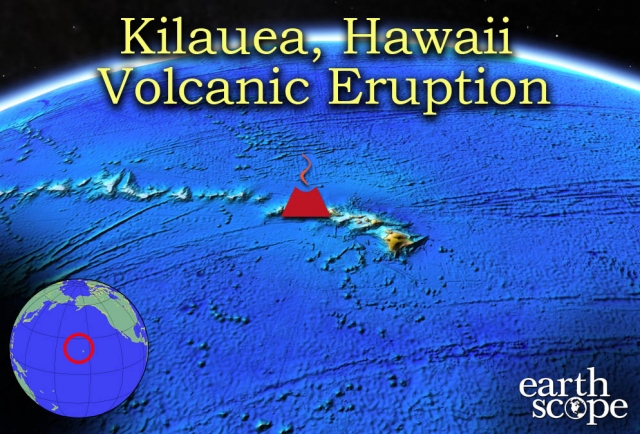
Kilauea Volcano in Hawaii has been erupting since 1983, but in late October 2014, it began to encroach on the residents living in the village of Pahoa once again. Pahoa has ~950 residents, and the village has experienced threats from the eruption of Kilauea Volcano before. The runny, basaltic lava flowing towards the village was produced earlier this year on June 27, and is estimated to be more than 900 degrees Celsius (1600 Fahrenheit), in temperature, capable of lighting fires in the nearby jungles, and of destroying infrastructure in the area. The flow has advanced over 12 miles since the original eruption. People have their life savings in their properties here. They face losing it all says businessman Mike Metcalf (retrieved from BBC article). Though defenses have been constructed around the village to mitigate, or even deflect the flow of the lava, it is unlikely that the barriers will deter the flow of the lava for long. The lava has already overtaken two roads and a cemetery near the village, but some residents are staying behind, despite the recommended evacuation, to watch the lava destroy their homes. Many residents are moving to a different town within the same region, but out of reach of the flows from Kilauea Volcano.
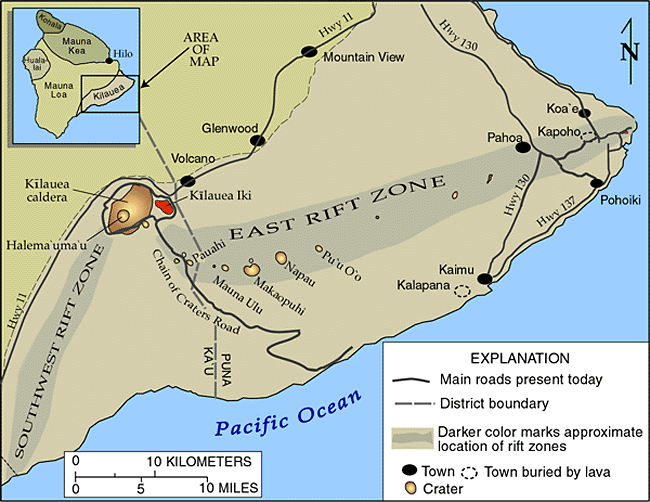
A map of Kilauea Volcano and the surrounding area retrieved from USGS. Pahoa lies east of the main volcano, but is vulnerable to smaller eruptions from some of the parasitic volcanos.
No official evacuation order has been issued from the government, but that may change if the flow continues its deadly path. The flow currently threatens more than 50 homes and businesses, but residents of the area have been preparing for the threat for months. Depending on the topography and intensity of the eruption, the flow of the lava ranges anywhere from several meters per hour to mere inches. In some areas, the lava has built up to 4 feet in height. The destruction of homes and businesses is not the only danger accompanying the lava flow. The residents of the region may also be cut off from the surrounding regions, undergo a fail in the electricity grid, or lose internet and/or phone service. The smoke emitted from the burning of the forest and infrastructure is also a problem if inhaled, and methane explosions are resulting from the burning of the dense shrubbery and vegetation in the path of the lava. Crime is also a danger, as abandoned houses can often fall prey to looters.
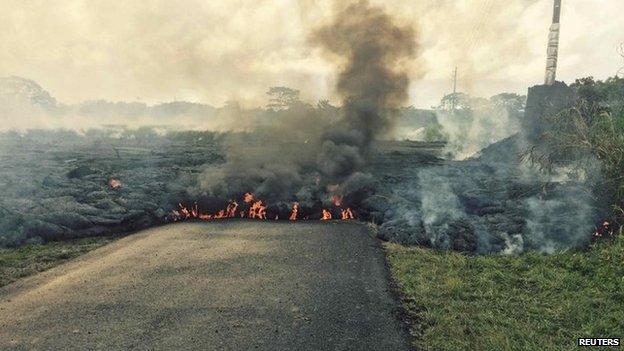
The flow from Kilauea has blocked off many roads near Pahoa. Retrieved from BBC News.
The path of the lava is very difficult to predict, and efforts to stop it have not met with success due to its shear destructive power. Some efforts that have been used to stop flows in the past include bombing the flow, the use of cold water to solidify the lava flow in Iceland, and physical barriers to redirect the flow away from residencies in Italy. Only the latter two methods were somewhat successful, and part of that success was the natural slowing and solidification of the original flow. The first recorded attempt to halt a flow was in 1669, when the people of Sicily were threatened by Mount Etna. The residents opened an artificial trench and cut off the path of the flow using only shovels, pickaxes, and wet sheepskins for protection.
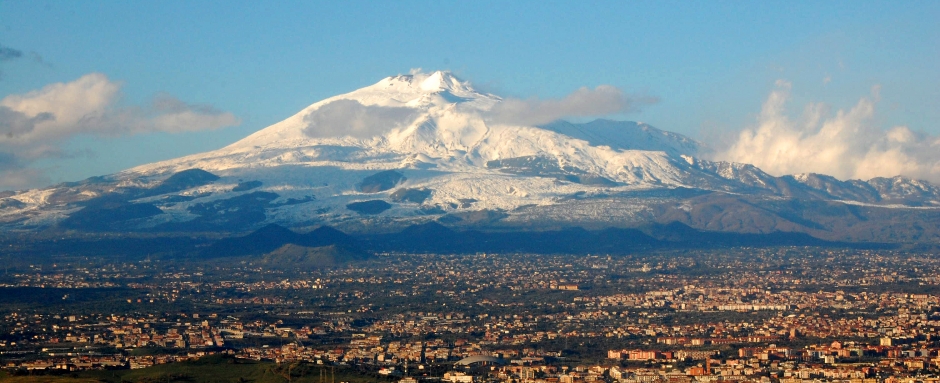
Mt. Etna in Sicily, Italy. Retrieved from Wikipedia.
Modern day attempts are not successful for the most part. In 1935, General George S. Patton coordinated a bomb strike on Hawaii Mauna Loa, the largest volcano on Earth. The lava was flowing at 1 mile per day towards the city of Hilo, and the bombs were sent to destroy the lava tubes, exposing the molten, flowing rock inside the hardened outer shell. Though craters were made in the tubes, the flow was so intense that they were completely filled with lava. Eventually, the volcano stopped erupting on its own before it could reach Hilo. Larger bombs could be a better stopping force than those used by Patton, but the amount of damage to the surrounding area may overtake that by the lava.
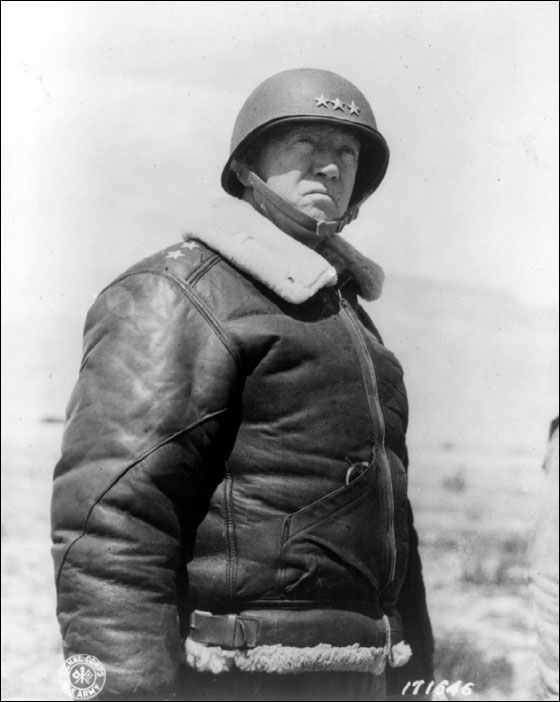
Lieutenant General Patton in 1935, prior to World War II.
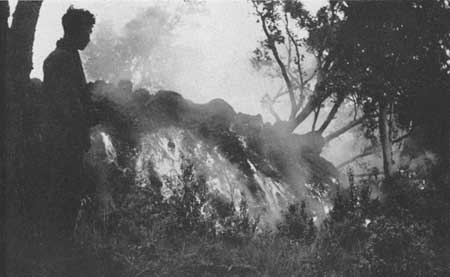
The flow from Mauna Loa advances through the jungle during the 1935 eruption.
The Iceland attempt was by far the most successful of the lot. In 1973, on the Icelandic island of Haimey, Eldfeld Volcano threatened the town of Vestmannaeyjar and the island only harbor. The Icelandic government responded by blasting the lava with frigid seawater for almost five months. The water hit the lava and turned to steam, allowing the dissipation of the heat in the molten rock, slowing the flow. A fifth of Vestmannaeyjar was destroyed before larger water cannons were brought in until the flow could be redirected to save the harbor. Over 1.5 billion gallons of water was used in this attempt. This effort was aided by the fact that an inexhaustible supply of water was available, and the lavas from Eldfeld Volcano were particularly slow moving.
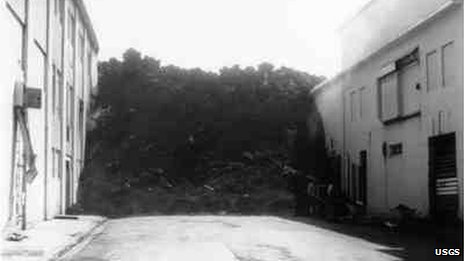
Lava stopped in the street of Vestmannaeyjar.
Hawaii is the result of a hot spot in the Pacific Plate. This means that magma from deep in the mantle pushes its way to the surface, emerging as a series of volcanoes that form in an island arc as the overriding tectonic plate moves. The hot spot remains stationary, but the Pacific Plate is pushed apart by the Mid-Oceanic Ridge, causing the formation of multiple islands in a crescent-moon shape along the ocean floor. EarthScope does not monitor the Hawaiian hotspot, but it does monitor several similar locations along the North American Plate continental subduction margin. Yellowstone, for example, is the physical evidence of a hot spot beneath the North American Plate, tectonically moving to the northwest and converging with the Pacific tectonic plate. EarthScope monitors this location with technology such as Plate Boundary Observatories (PBOs), subsurface seismic activity monitoring stations (seismometers), the transportable Array system, and actual fieldwork led by geologists from across the United States.
For more information on the Kilauea flow, check out BBC, USGS, and the USGS Hawaiian Volcano Observatory.




